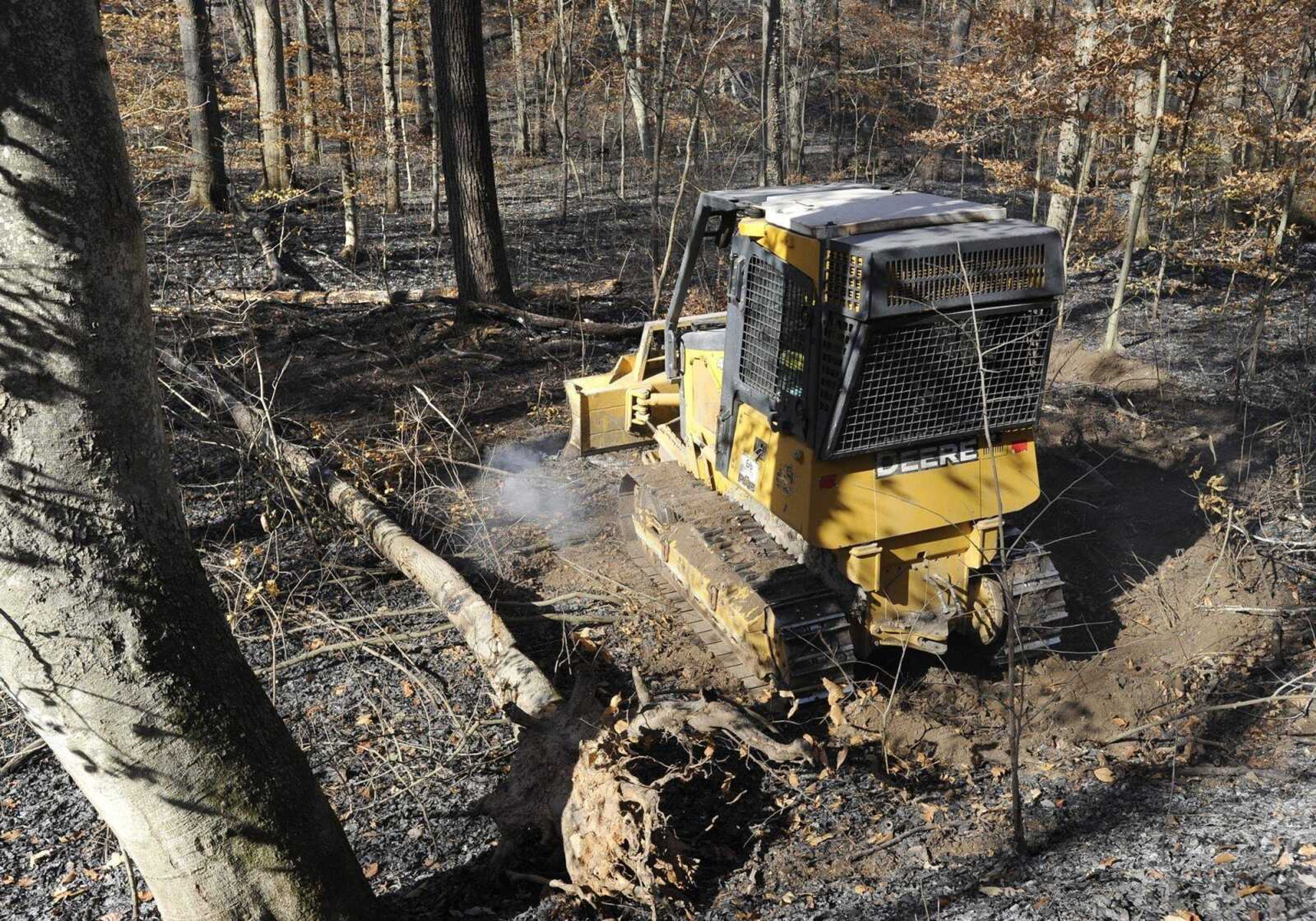HARRISBURG, Ill. -- A wildfire at Shawnee National Forest in Southern Illinois was under control Wednesday, but only after burning its way through more than 400 pristine acres in an area frequented by hikers, hunters and other wildlife lovers.
U.S. Forest Service officials described the wildfire as "creeping" and determined it was "caused by humans," saying they would keep a close eye on hot-spots over the next several weeks in case of a flare-up. Forest Service firefighters from several states, and as far away as California, fought the fire since it began Monday afternoon. They basically had it contained by Wednesday. No one was injured and no property was damaged, officials said. The wildfire was the worst at Shawnee for at least 20 years and possibly longer.
"It's been terribly dry, we've had low humidity and we're in a drought," said Forest Service information officer Pat York. "But it wasn't a wildfire like people think of in California. It was a low-intensity wildfire that was creeping along and basically burning along the ground."
The fire apparently started in a field on property adjacent to the 280,000-acre Shawnee National Forest, York said, though the exact origin is under investigation, she said. The national forest is about 25 miles from Cape Girardeau in Jackson County.
On Wednesday, Forest Service workers were monitoring the area closely. The wildfire was contained to a 409-acre area known as Grassy Knob in southwest Jackson County. On Tuesday, however, more than two dozen Forest Service firefighters had been called in to perform what is called a burn-out operation. The service initially considered sending in crews to directly battle the blaze, but steep, sloping terrain made that too dangerous, York said.
Instead, the firefighters fought fire with fire.
A specialized crew of Forest Service firefighters from Southern California was called in as well, York said. She said the so-called "hotshot crew" is a group of about 20 highly skilled wildland firefighters trained in wildland suppression tactics.
Using a method called a backfire, or back-burn, the firefighters deliberately set fires along a gravel road that forms a perimeter around Grassy Knob, said David Vela, a Forest Service firefighter from San Bernardino County. As the backfire burns, it creates a barrier, thereby depriving the primary fire of tinder when it reaches the site of the backfire, he said. Backfires stop the primary fire in its tracks and that's what happened there, he said.
"We're going to be here for several days watching it and making sure it doesn't start up again in the hot spots," Vela said. "We're also going to be taking down some of the dead trees."
York said that most of the damage to the environment probably wouldn't even be noticeable in a year or two. The fire wasn't a canopy fire, meaning it was low-lying. Much of the fire damage was to trees that had been knocked over in a wind storm last year.
"Fires are a part of what happens in the ecosystem," she said. "You'd like to think that they wouldn't be caused by humans, but the forest will survive."
smoyers@semissourian.com
388-3642
Connect with the Southeast Missourian Newsroom:
For corrections to this story or other insights for the editor, click here. To submit a letter to the editor, click here. To learn about the Southeast Missourian’s AI Policy, click here.







